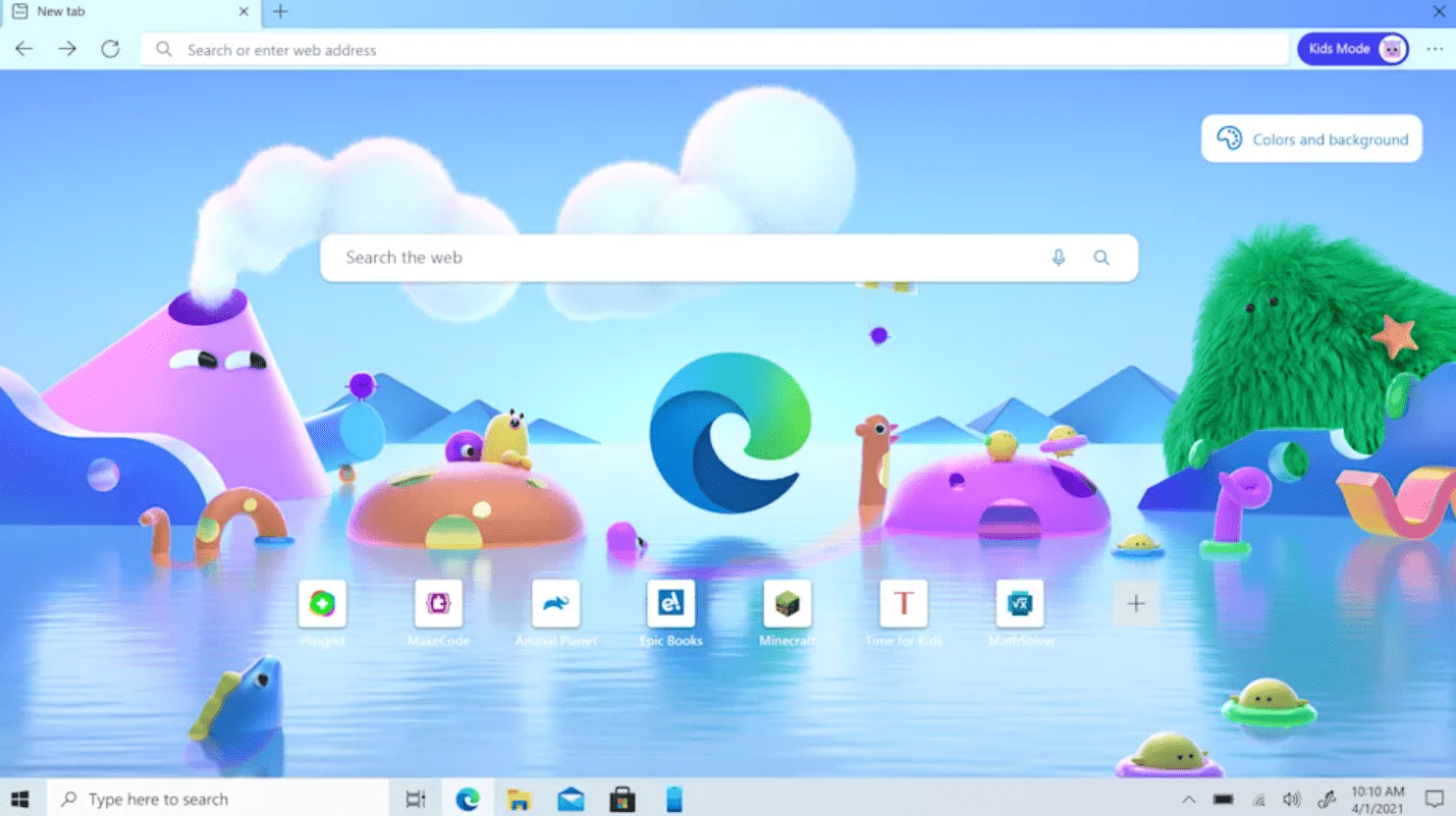Microsoft (MSFT) on Thursday debuted a new kids mode for its Edge web browser, the first such feature from any major browser. The move, the company says, is meant to ensure that parents can let their children jump online without worrying about the kind of content they’ll come across.
Available starting today, Microsoft Edge Kids Mode is designed to prevent kids 12 and under from gaining access to sites and services their parents may find objectionable.
“For U.S. parents with children aged 12 and younger, 58% are concerned with the issues their children face when using digital products and services, and while the majority are aware of parental control solutions, only about half are actually using one today,” Microsoft corporate vice president Liat Ben-Zur said in a statement, citing internal research.
Microsoft Edge Kids Mode is its own version of Edge that features unique home screen designs, and news stories from kid-friendly publications like Animal Planet and Time for Kids. To open kids mode, parents launch Edge on their PC or Mac and select the kids mode button from the profile menu in the top right corner of the screen.
Parents can choose from two versions of kids mode, one for kids ages 5 to 8, the other for kids 9 to 12. The version for kids 5 to 8 is a simplified version of the Edge browser with a unique kid-friendly look, while the version for older kids includes those links to age-appropriate news sites.
To prevent kids from visiting inappropriate websites, Microsoft Edge Kids Mode includes a built-in list of approved sites. Parents can edit those sites to add additional pages, or limit Microsoft’s pre-selected sites.
Part of Microsoft’s plan to keep kids from wanting to leave kids mode is to provide them with customizable home screens, complete with characters from popular Disney (DIS) movies. If a child does try to leave kids mode, however, they’ll find that they need to enter their parents’ passcode.
Tech giants are marketing more products for kids
Microsoft’s Edge Kids Mode comes as more tech companies push tech products to younger users. Google (GOOG, GOOGL), for instance, already offers a version of YouTube for children called, appropriately, YouTube Kids. The service limits the kinds of videos available through automated and human content reviews. It also provides parents with parental controls and screen time options.
Facebook (FB), meanwhile, has its own Messenger Kids service that allows kids under 13, the age limit to join Facebook, to send messages to a list of contacts approved by their parents. More recently, Facebook has been mulling a version of Instagram for kids under 13, though that has received considerable pushback from politicians. On Thursday, a coalition of 35 children’s advocacy and consumer groups called on Facebook to cancel its plans for the service.
Overall, Microsoft Edge Kids Mode looks like it will be less cumbersome than most parental control apps designed to keep kids from accessing adult or otherwise inappropriate content.
The issue, however, is that Edge simply isn’t as popular as Microsoft might otherwise like, meaning that it won’t impact as many children and parents as a similar feature on Google’s Chrome browser would.
Chrome dominates the browser industry with 64% of global market share, according to StatCounter. Edge has just 3.45% of global browser market share.
To make Edge more appealing to consumers, and to ensure that it is compatible with the various millions of websites that have been designed specifically for Chrome, Microsoft designed Edge to run on the same open source Chromium software that powers Chrome.
In fact, if you use Chrome and then switch to Edge, you’ll notice that the apps have an incredibly similar look and feel. Still, it’s been tough for Edge to make any headway in the market.
For Microsoft, the hope is features like kids mode will sway enough consumers to ditch Chrome for Edge. But to do that, Microsoft will have to ensure that Edge takes off not just on desktops, but mobile devices too.
And with Chrome installed on nearly every Android device in the world, and Android the most popular operating system in the world, that could be quite a tall order.

